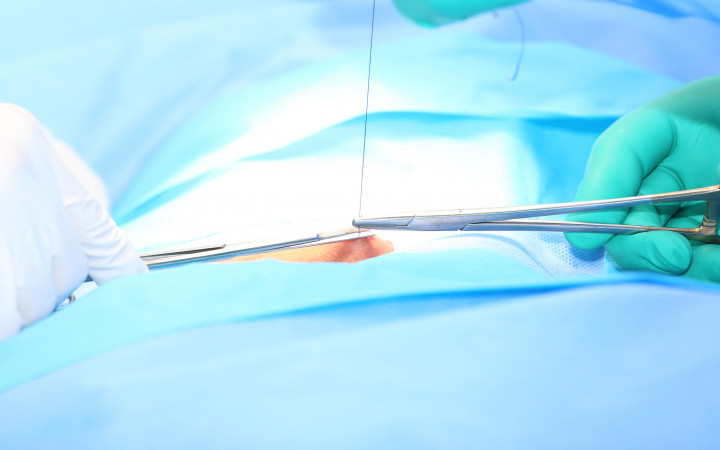Today’s Wonder of the Day was inspired by Cate. Cate Wonders, “What are stitches and why do people have them” Thanks for WONDERing with us, Cate!
Have you ever fallen on the playground and cut your hands or legs? What about a bicycle crash? A sports mishap? There are many ways that accidents can happen that result in getting nasty cuts and bruises.
Sometimes cuts can be cleaned and covered with a bandage to heal. At other times, though, they need stitches. Do you know why?
Stitches are for larger cuts that a doctor believes will not heal correctly on their own. To heal, the sides of a cut must be close together. This helps the skin repair itself. With a larger injury, stitches help to bring the sides of the skin together to heal.
How can you tell if a cut needs stitches? Ask an adult to help you take a close look at the injury. If it is very deep or wide, it may need stitches. This can also be true if the cut does not stop bleeding after you apply pressure for five minutes. Additionally, cuts on certain parts of the body are more likely to need stitches than others. This includes the face, lips, and neck. A doctor will know for sure whether an injury needs stitches—ask an adult to take you to your regular doctor or to an urgent care center for help.
Have you ever had stitches? If so, you know they can go a long way toward helping you heal. It can sound scary, but the procedure is normally quick and not as painful as you might expect. Doctors and nurses will usually use a local anesthetic to numb your skin around the cut. Most of the time, you will only feel a little pressure but not much pain.
The stitches themselves are just loops of thread—called sutures—that a doctor uses to sew your cut closed. Once the cut is completely closed, the doctor will tie a knot at the end, so the cut will stay closed until it heals.
Sutures can be made from different types of materials. Many are made from nylon or silk thread. These stitches need to be removed by a doctor once the cut is healed. It’s an easy procedure and usually doesn’t hurt. The doctor just cuts the knot and pulls the remaining pieces of thread back through the skin.
Thanks to science and new technology, however, not all stitches need to be removed by a doctor. Doctors can now also use vicryl sutures. These dissolve in your skin over time, so there’s no need to get them removed.
When the doctor is finished putting in your stitches, you’ll be told how to take care of your wound. You’ll usually need to avoid getting your stitches wet. You might also have to put antibiotic ointment and bandages on your cut to make it heal faster.
Make sure you talk with your parents about how to take care of your stitches. You’ll also want to keep a close eye on your stitches to make sure there are no signs of infection, such as red or swollen areas. If you see something about your stitches that concerns you, tell your parents and they can decide whether or not you need to go see the doctor again.
Standards: CCRA.L.3, CCRA.L.6, CCRA.R.1, CCRA.R.2, CCRA.R.4, CCRA.R.10, CCRA.SL.1, CCRA.W.2, CCRA.W.4, CCRA.W.10, CCRA.L.1, CCRA.L.2




